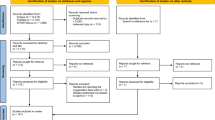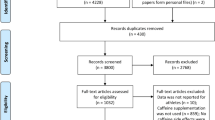Abstract
Purpose
Adaptations during voluntary breath-hold diving have been increasingly investigated since these athletes are exposed to critical hypoxia during the ascent. However, only a limited amount of literature explored the pathophysiological mechanisms underlying this phenomenon. This is the first study to measure arterial blood gases immediately before the end of a breath-hold in real conditions.
Methods
Six well-trained breath-hold divers were enrolled for the experiment held at the “Y-40 THE DEEP JOY” pool (Montegrotto Terme, Padova, Italy). Before the experiment, an arterial cannula was inserted in the radial artery of the non-dominant limb. All divers performed: a breath-hold while moving at the surface using a sea-bob; a sled-assisted breath-hold dive to 42 m; and a breath-hold dive to 42 m with fins. Arterial blood samples were obtained in four conditions: one at rest before submersion and one at the end of each breath-hold.
Results
No diving-related complications were observed. The arterial partial pressure of oxygen (96.2 ± 7.0 mmHg at rest, mean ± SD) decreased, particularly after the sled-assisted dive (39.8 ± 8.7 mmHg), and especially after the dive with fins (31.6 ± 17.0 mmHg). The arterial partial pressure of CO2 varied somewhat but after each study was close to normal (38.2 ± 3.0 mmHg at rest; 31.4 ± 3.7 mmHg after the sled-assisted dive; 36.1 ± 5.3 after the dive with fins).
Conclusion
We confirmed that the arterial partial pressure of oxygen reaches hazardously low values at the end of breath-hold, especially after the dive performed with voluntary effort. Critical hypoxia can occur in breath-hold divers even without symptoms.




Similar content being viewed by others
Abbreviations
- BE-ecf:
-
Base excess of extracellular fluid
- HCO3− :
-
Bicarbonate
- PaCO2 :
-
Arterial partial pressures of carbon dioxide
- PaO2 :
-
Arterial partial pressures of oxygen
- POST DP:
-
Arterial blood sampling after a breath-hold sled-assisted dive
- POST DP-EXE:
-
Arterial blood sampling after a breath-hold dive with fins
- POST SUR:
-
Arterial blood sampling after breath-holding while moving at the surface
- PRE:
-
Arterial blood sampling out of the water at rest
- SaO2%:
-
Arterial hemoglobin-oxygen saturation
- TCO2 :
-
Total carbon dioxide
- TLC:
-
Total lung capacity
References
Bosco G, Rizzato A, Martani L, Schiavo S, Talamonti E, Garetto G, Paganini M, Camporesi EM, Moon R (2018a) Arterial blood gas analysis in breath-hold divers at depth. Front Physiol 5(9):1558. https://doi.org/10.3389/fphys.2018.01558
Bosco G, Rizzato A, Moon RE, Camporesi EM (2018b) Environmental physiology and diving medicine. Front Psychol 2(9):72. https://doi.org/10.3389/fpsyg.2018.00072
Craig AB (1961) Causes of loss of consciousness during underwater swimming. J Appl Physiol 16:583–586. https://doi.org/10.1152/jappl.1961.16.4.583
Craig AB Jr (1976) Summary of 58 cases of loss of consciousness during underwater swimming and diving. Med Sci Sports 8(3):171–175
Craig AB, Harley AD (1968) Alveolar gas exchanges during breath-hold dives. J Appl Physiol 24(2):182–189. https://doi.org/10.1152/jappl.1968.24.2.182
Ferretti G, Costa M, Ferrigno M, Grassi B, Marconi C, Lundgren CE, Cerretelli P (1991) Alveolar gas composition and exchange during deep breath hold diving and dry breath holds in elite divers. J Appl Physiol 70(2):794–802. https://doi.org/10.1152/jappl.1991.70.2.794
Fitz-Clarke JR (2006) Adverse events in competitive breath-hold diving. Undersea Hyperb Med 33(1):55–62
Fitz-Clarke JR (2018) Breath-hold diving. Compr Physiol 8(2):585–630. https://doi.org/10.1002/cphy.c160008
Fuhrman TM, Pippin WD, Talmage LA, Reilley TE (1992) Evaluation of collateral circulation of the hand. J Clin Monit 8(1):28–32
Hong SK, Rahn H, Kang DH, Song SH, Kang BS (1963) Diving pattern, lung volumes, and alveolar gas of the Korean diving woman (ama). J Appl Physiol (1985) 18(3):457–465
Lin YC, Lally DA, Moore TO, Hong SK (1974) Physiological and conventional breath-hold breaking points. J. Appl Physiol 37(3):291–296. https://doi.org/10.1152/jappl.1974.37.3.291
Lindholm P (2006) Physiological mechanisms involved in the risk of loss of consciousness during breath-hold diving. In: Lindholm P, Pollock NW, Lundgren CEG (eds) Breath-hold diving. Divers Alert Network, Durham, pp 26–31
Lindholm P (2007) Loss of motor control and/or loss of consciousness during breath-hold competitions. Int J Sports Med 28(4):295–299. https://doi.org/10.1055/s-2006-924361
Lindholm P, Lundgren CE (2006) Alveolar gas composition before and after maximal breath-holds in competitive divers. Undersea Hyperb Med 33(6):463–467
Lindholm P, Lundgren CE (2009) The physiology and pathophysiology of human breath-hold diving. J Appl Physiol 106(1):284–292. https://doi.org/10.1152/japplphysiol.90991.2008
Linér MH, Ferrigno M, Lundgren CE (1993) Alveolar gas exchange during simulated breath-hold diving to 20 m. Undersea Hyperbaric Med 20(1):27–38
Muth CM, Radermacher P, Pittner A, Steinacker J, Schabana R, Hamich S, Paulat K, Calzia E (2003) Arterial blood gases during diving in elite apnea divers. Int J Sports Med 24(2):104–107. https://doi.org/10.1055/s-2003-38401
Olsen CR, Fanestil DD, Scholander PF (1962) Some effects of apneic underwater diving on blood gases, lactate, and pressure in man. J Appl Physiol 17:938–942. https://doi.org/10.1152/jappl.1962.17.6.938
Otis AB, Rahn H, Fenn WO (1948) Alveolar gas changes during breath holding. Am J Physiol 152(3):674–986. https://doi.org/10.1152/ajplegacy.1948.152.3.674
Parkes MJ (2006) Breath-holding and its breakpoint. Exp Physiol 91(1):1–15. https://doi.org/10.1113/expphysiol.2005.031625
Qvist J, Hurford WE, Park YS, Radermacher P, Falke KJ, Ahn DW, Guyton GP, Stanek KS, Hong SK, Weber RE, Zapol WM (1993) Arterial blood gas tensions during breath-hold diving in the Korean ama. J Appl Physiol 75(1):285–293. https://doi.org/10.1152/jappl.1993.75.1.285
Sasse SA, Berry RB, Nguyen TK, Light RW, Mahutte CK (1996) Arterial blood gas changes during breath-holding from functional residual capacity. Chest 110(4):958–964
Schaefer KE, Carey CR (1962) Alveolar pathways during 90-foot, breath-hold dives. Science 137(3535):1051–1052
Author information
Authors and Affiliations
Contributions
GB, EC, RM, and MP conceived and designed the experiments. GB, AR, LM, GG, MP, and JL performed the experiments. MP, RM, and AR analyzed the data. GB contributed the materials. GB, AR, MP, EC, and RM wrote the paper. All authors read and approved the manuscript.
Corresponding author
Ethics declarations
Conflict of interest
The authors declare that they have no conflict of interest.
Additional information
Communicated by Guido Ferretti.
Publisher's Note
Springer Nature remains neutral with regard to jurisdictional claims in published maps and institutional affiliations.
Electronic supplementary material
Below is the link to the electronic supplementary material.
Rights and permissions
About this article
Cite this article
Bosco, G., Paganini, M., Rizzato, A. et al. Arterial blood gases in divers at surface after prolonged breath-hold. Eur J Appl Physiol 120, 505–512 (2020). https://doi.org/10.1007/s00421-019-04296-2
Received:
Accepted:
Published:
Issue Date:
DOI: https://doi.org/10.1007/s00421-019-04296-2




